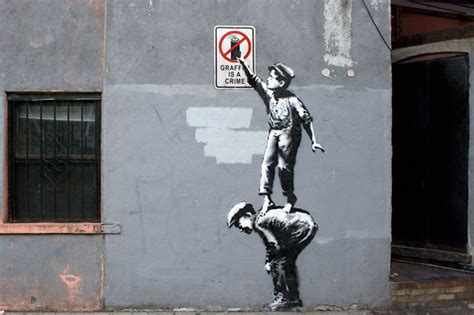Street art is a popular type of art that originates from graffiti artists who paint on public surfaces such as buildings, walls, and sidewalks. Street art can be a beautiful and creative way to tell a story, express an idea, or capture a moment in time. However, many people wonder if street art should be considered a crime or art.
The truth is, it depends. Street art can certainly be an art form, but it can also be a crime, depending on the circumstances. For example, if the artist paints without permission, or on a surface that could be damaged, then it may be considered a crime. On the other hand, if the artist has permission or is painting a mural on a privately owned building, then it might be considered art.
In some cities, street art is highly regulated. In some places, it is even illegal. It is important to know the laws and regulations in your area so that you don’t unintentionally break the law. If you are unsure, it is best to check with your local government or law enforcement before you begin painting.
At the end of the day, street art can be a great way to express yourself and make a statement. It can be a powerful and meaningful form of self-expression, and it often carries an important message. However, it is important to be aware of the legal implications that come with street art, and to make sure you are following the law before you start painting.
Exploring The Debate: Is Street Art An Art Or Criminal Act?
The debate over street art is almost as old as the art itself. Is it an art form? Or is it a criminal act?
There is no straightforward answer to this question, as it depends heavily on the context. Street art can be both beautiful and profound – a way to express views and feelings that would otherwise be inaccessible. It can also be a source of great pride to a community, a way to express its culture and identity. On the other hand, it can also be a form of vandalism that can damage property and lead to increased crime in an area.
Street art can take many forms – from graffiti and murals to wheat-pasted posters and stencils. It is often created by anonymous artists and can be found in urban environments around the world. Many street art pieces contain political messages, social commentary, or simply aesthetic beauty.
The legality of street art varies from country to country. In some places, it is tolerated and even encouraged. In other places, it is seen as a form of vandalism and can lead to criminal charges. In some cases, street art is embraced by a community and can lead to increased tourism and economic growth.
One of the key arguments in the debate is whether street art should be seen as an art form or a criminal act. Proponents of street art believe that it has the potential to be a powerful form of expression and can be a positive force in a community. They argue that it is a type of art and should be treated as such. Opponents argue that it is a form of vandalism that can cause damage to property and can lead to increased criminal activity.
The debate over street art is ongoing, and it is unlikely to be resolved anytime soon. It is important to consider all angles of this debate before coming to a conclusion. Street art can be a powerful form of expression, but it can also be a form of vandalism. The key is to consider the context and the potential consequences before deciding whether it is art or a criminal act.
Understanding The Legal Status Of Street Art: Graffiti Vs. Public Art
One of the most common questions when it comes to street art is “Is street art a crime or art?” The answer to this question depends on the type of art and the context it is created in. Street art can range from graffiti to public art installations.
Graffiti is generally considered illegal, as it is often done without permission and can damage property. Generally, graffiti is created on private property, such as buildings or walls, and can be seen as a form of vandalism. However, there are certain instances in which graffiti can be legal, such as when it is done with the permission of the owner of the property. In these cases, graffiti may be considered a form of public art.
Public art, on the other hand, is generally considered legal as it is typically commissioned by a government agency or organization. Public art is often designed to provide aesthetic pleasure, inspire the public, or promote a particular idea or message. Public art is typically installed on public property and is often protected by law. It is important to note, however, that while public art is generally considered legal, it can still be subject to certain regulations and restrictions.
When considering whether street art is a crime or art, it is important to understand the legal status of each type of art. Graffiti is generally considered illegal, while public art is generally considered legal. It is also important to understand the context in which the art is created, as this can play an important role in determining its legality.
In conclusion, the legal status of street art depends on the type of art and the context in which it is created. Graffiti is generally considered illegal, while public art is generally considered legal. It is important to understand the legal status of each type of art before engaging in these activities.
What is street art?

